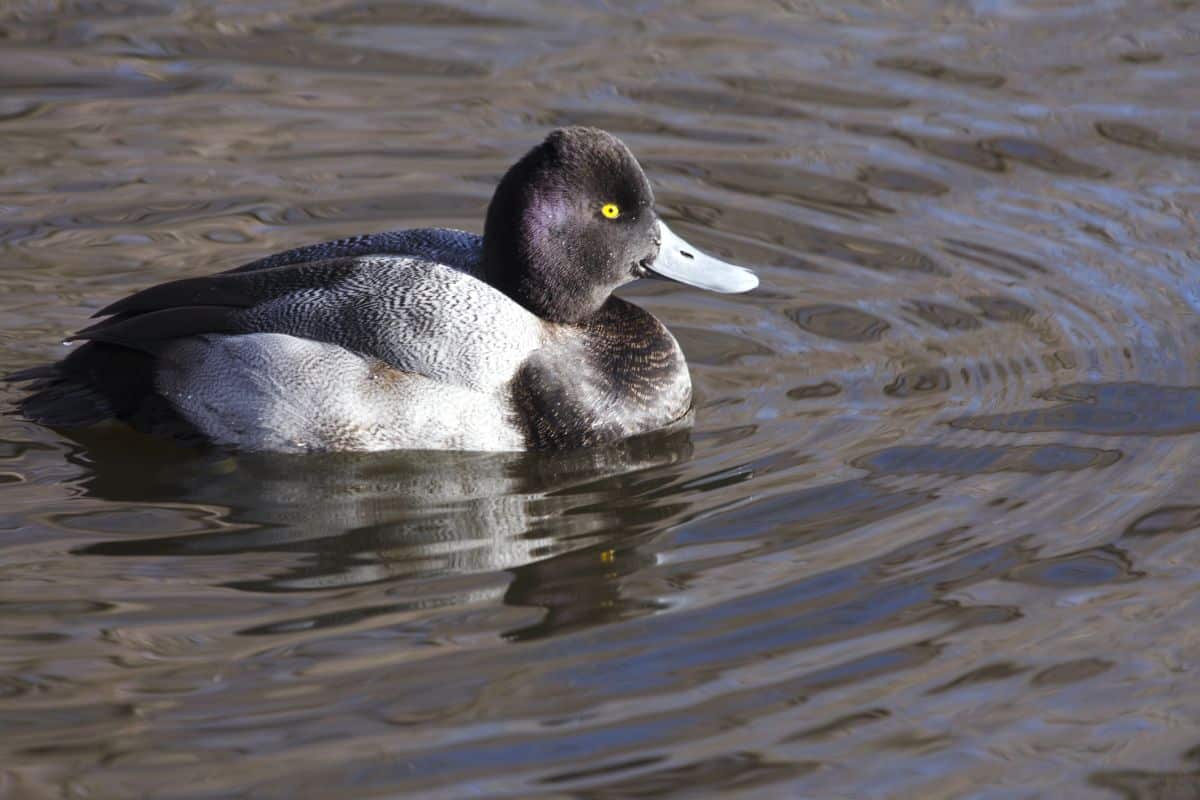The greater scaup is a lesser known duck species that’s found in parts of North America. These diving ducks aren’t normally kept in captivity, but they’re fascinating wild animals to learn about.
Greater Scaup Duck Overview
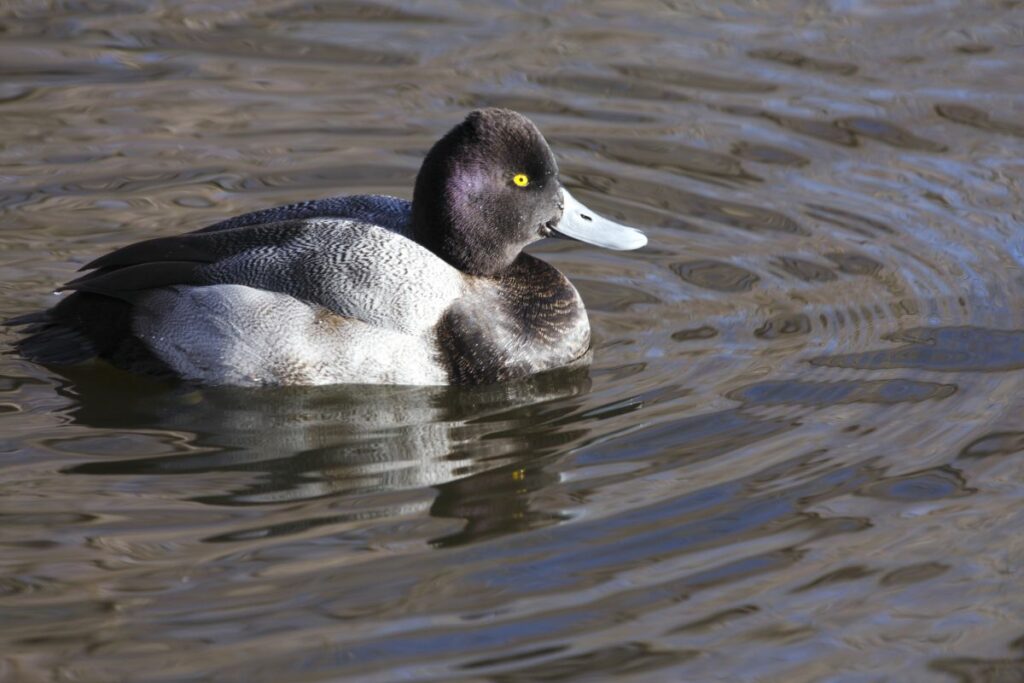
Before we look at the details of this duck breed, let’s look at an overview of its characteristics.
| Location | North America |
| Lifespan | Up to 22 years |
| Weight | 1.6 to 3 pounds |
| Length | 15 to 22 inches |
| Appearance | Males have black heads with white and brown body feathers. Females have brown feathers with a white patch by their bills. |
| Egg Production | 6 to 13 eggs per year |
| Can Be Kept in Captivity? | No |
What are Greater Scaups?
Greater scaups are a species of wild diving ducks. Diving ducks are any ducks that regularly dive below the water’s surface to find food. They fully submerge themselves underwater when feeding while dabbling ducks only dip their heads in the water.
Greater Scaup Population
Greater scaups have a stable population. There are currently about 780,000 of these birds in the wild. Habitat loss may affect them in the future, but as of right now, they’re not a threatened species.
Can Greater Scaups Be Kept in Captivity?
No, greater scaups can’t be kept in captivity. They’re wild animals that wouldn’t serve any purpose on a farm due to their infrequent egg-laying. These birds also have a specific habitat and need to migrate, so those needs can’t be met in domestication.
The only reason a greater scaup would be cared for by humans is if they’re at a zoo, sanctuary, or wildlife rehabilitation center.
Greater Scaup Duck History
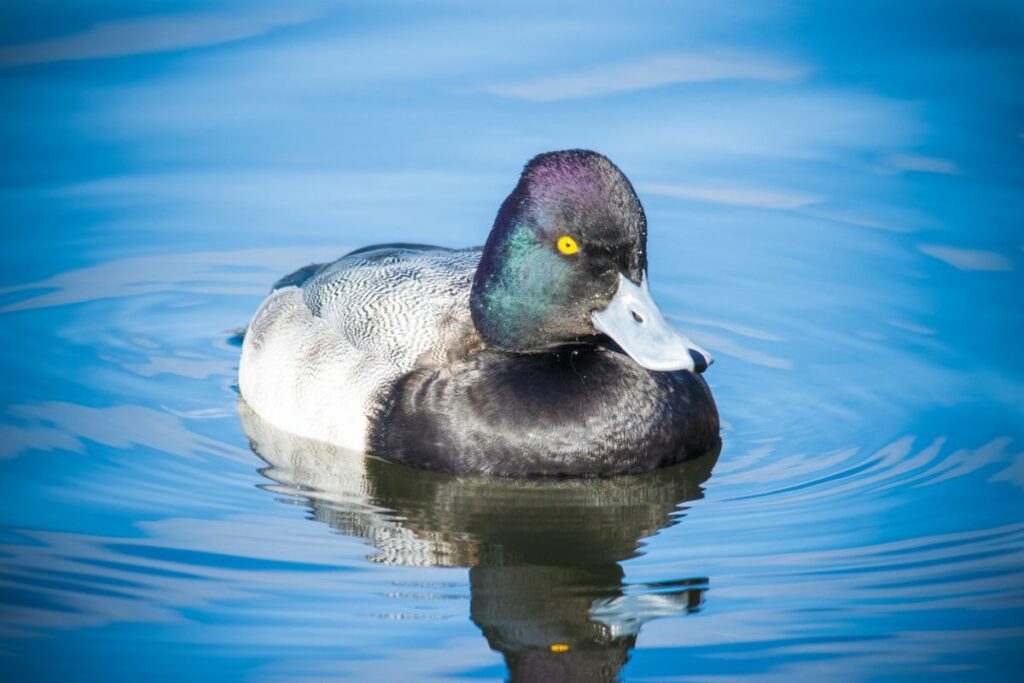
The greater scaup’s scientific name is Aythya marila. They’re the larger relatives of the lesser scaups. Greater scaups were first described by Carl Linnaeus in 1761.
Since there are populations of these birds in both North America and Europe, they’re listed as two separate subspecies, but they’re both greater scaups.
It’s unclear where the bird’s name came from, but some believe that it’s because their calls sound like they’re saying “scaup scaup.” Others think the name could be related to “scalp,” the Scottish and Northern English word for “shellfish bed.”
Habitat
These ducks can be found across North America. During warmer months, they spend their time in Canada and the northern United States. During colder months, they migrate to warm areas of the southern United States where the water won’t freeze over. While it’s less common, some of these birds also live in northern Europe.
Most greater scaups travel to the Atlantic or Pacific coast when migrating. They’re almost always found near bodies of water, whether it’s lakes, ponds, or wetlands. They prefer shallow waters that are just deep enough for them to dive into. They seek out bodies of water that have an abundance of vegetation.
Appearance
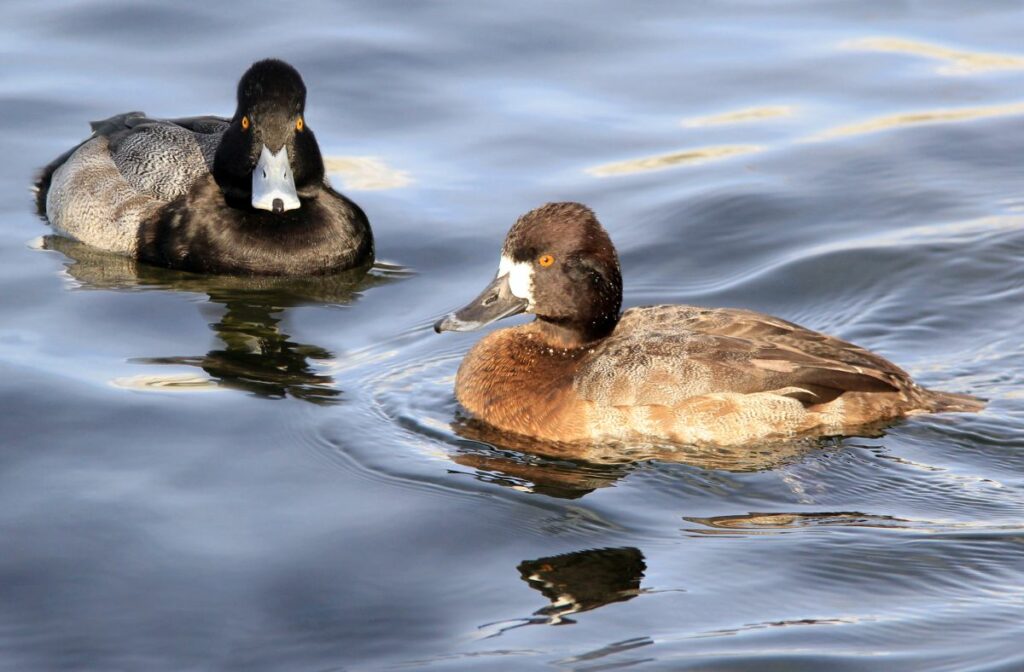
Greater scaups are shaped like average ducks, and they have rounded heads. They’re larger than a crow, but smaller than a goose. Their bills are long but curved at the end to help them grab food when diving.
Coloring
Male and female greater scaups have unique appearances from each other. From a distance, the males look black and white. They have a black head and a black and white body.
Yet, if you look closer, you can see that their head has a tint of green and there are some brown feathers on their body. Males have more vibrant colors during the breeding season.
The females have brown plumage with a white patch around the edge of their bills. Both males and females have yellow eyes.
Size and Shape
Both males and females weight between 1.6 and 3 pounds. They’re about 15 to 22 inches long. Their wingspan is between 28 and 31 inches.
Diet
These ducks feed mostly on mollusks and plant material. They may also eat insects and seeds. They prefer to forage during the day, but will forage at night if they feel it’s safer.
In the summer, they seek out plants more than anything else. Their favorite plants include pondweeds, wild celery, grasses, and sedges. In the winter, they prefer invertebrates, such as mussels, clams, oysters, and snails.
To find this food, they dive below the water and stick their bills into muddy substrates. They quickly open and close their beaks while swimming past the mud to stir up plants and invertebrates. Then, they pick out what they want to eat.
They can dive up to 23 feet below the surface, but they usually forage no deeper than 7 feet.
Behavior
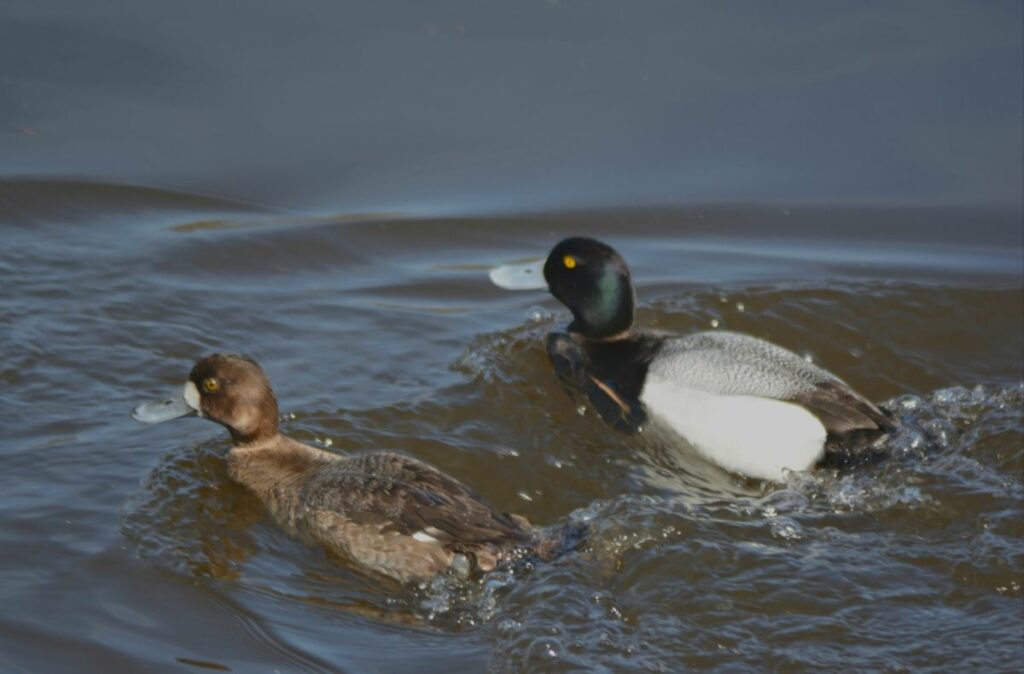
Greater scaups are social birds that usually travel in flocks. Those flocks can consist of other diving duck species. During migration, they gather by bays, lakes, and wetlands before traveling to a warmer climate. The only time they may show aggressive behaviors is when mating.
These ducks are most commonly seen floating on the water. They may grab food without going underwater, but their primary method of foraging is diving to the muddy floor of a body of water.
They fly using strong, rapid wingbeats. Diving ducks rarely fly long distances, so that’s why greater scaups don’t migrate as far as some of the other duck species do.
Breeding
When breeding, greater scaups stick with one partner during the mating season, but they usually find a new mate each season. To court the females, males gather in groups near a female, and they fight with each other in front of her.
If a female is interested in one of the males, she’ll bob her head and stretch out her neck while making a call. After mating, females will build a nest along the edge of water. Several greater scaup nests are typically built near each other.
Egg Production
Females produce one clutch of eggs per year, which includes 6 to 13 eggs. They egg color is a mix between brown, olive, and buff.
Young Greater Scaups
Ducklings of this species become independent early in life. Mothers lead their young to the water shortly after they hatch. The ducklings feed themselves, and they’re capable of flying 40 to 45 days after hatching.
Frequently Asked Questions
Now that you know some details about greater scaups, you might have lingering questions.
Greater scaups aren’t the type of ducks you would keep on a farm, but there are plenty of other domesticated duck breeds. Here are some examples:
Muscovy
American Pekin
Indian Runner
Crested Duck
Rouen Duck
Saxony Duck
Call Duck
As the name implies, greater scaups are larger than lesser scaups, but other than that, they look similar. The black head of a male greater scaup has a hint of green while a lesser scaup has a hint of purple. Greater scaups also have rounder heads and wider bills.
Yes, some people hunt greater scaups because their meat is considered flavorful. However, hunters should always verify that hunting these birds is legal in their area before doing so.
“Scaup” is pronounced like “skaap,” not “skawp.”
Finding a Duck Breed for You
Ducks are fascinating creatures, but not all of them are good for captivity. So, if you’re looking for a type of duck to keep for egg production or companionship, focus on domesticated duck breeds so you can find one that’s suitable for you. Greater scaups may not be one of those duck breeds, but they’re still an exciting species to learn about.
